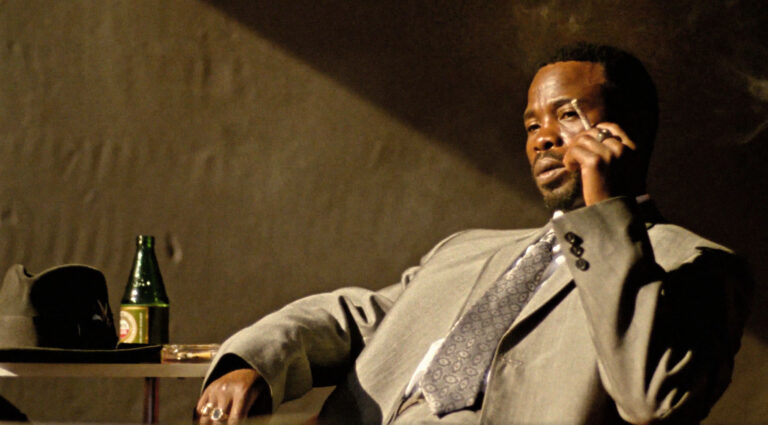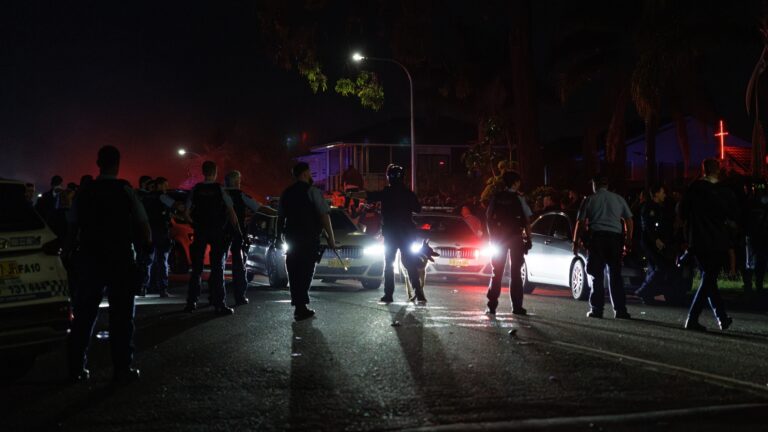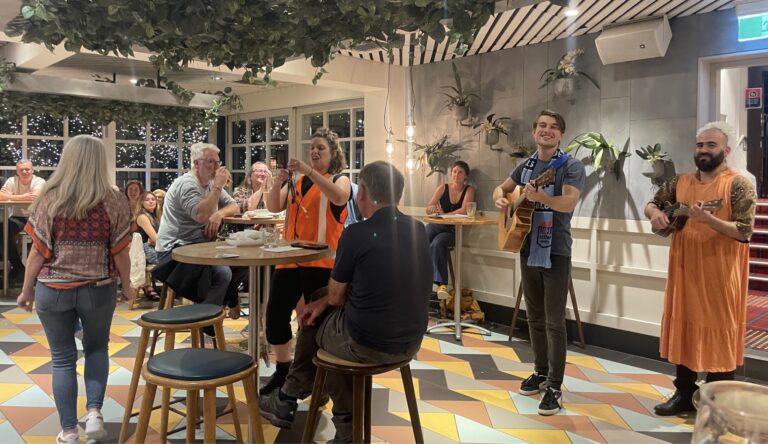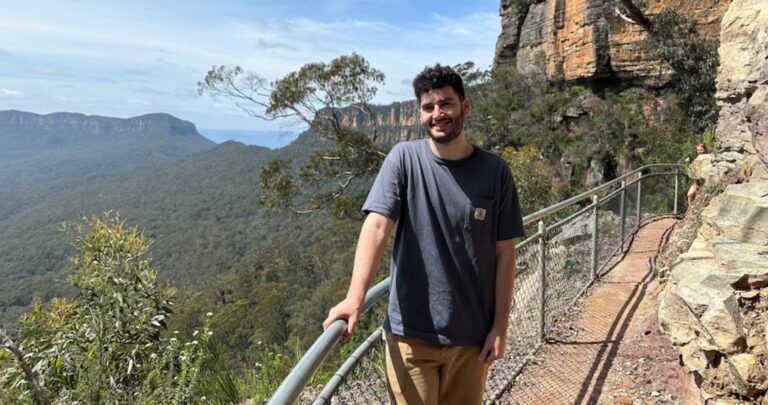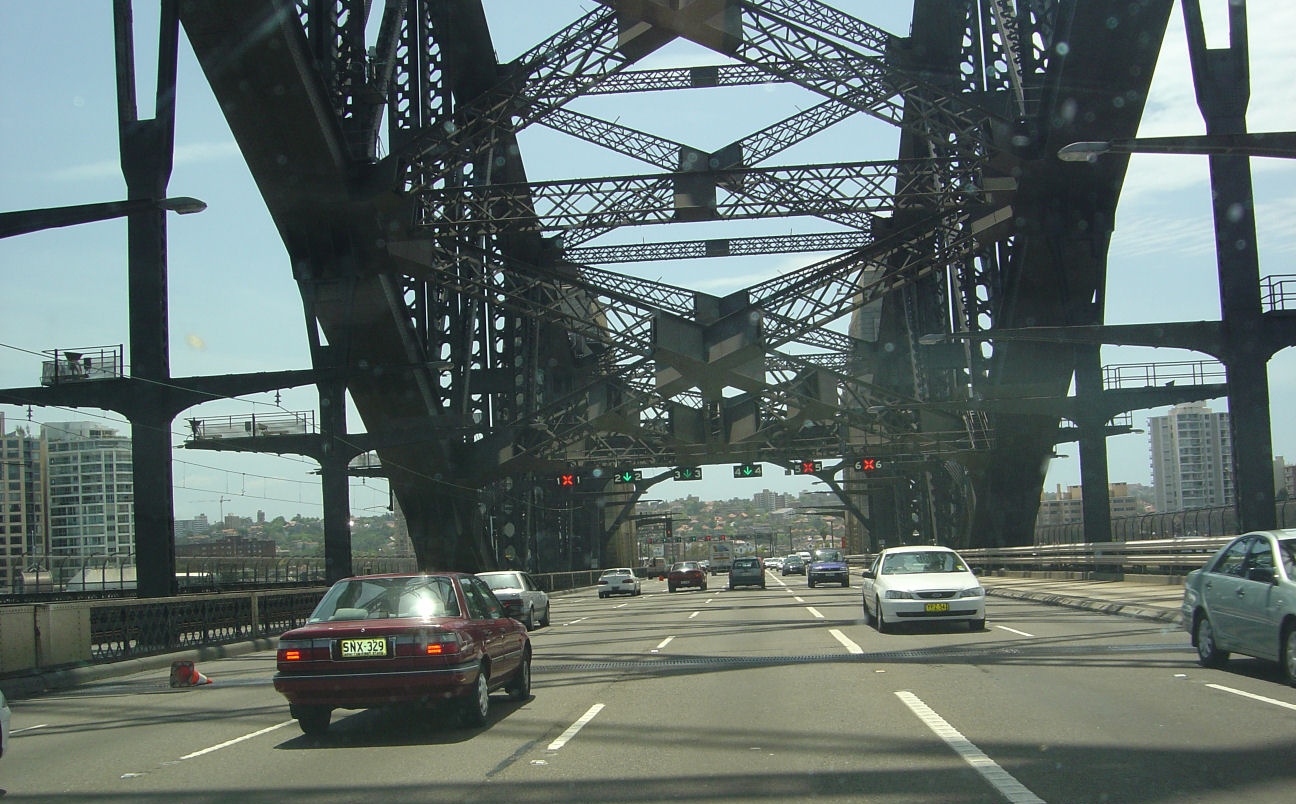
29 years, 437 deaths – yet no answers, no convictions and no justice

By Wendy Bacon
Aboriginal families whose sons or daughters have died in custody formed a circle for a healing smoking ceremony, performed by Gadigal elder Aunty Rhonda Dixon-Grovenor at Djarrbarrgalli (the Gadigal word for ‘Domain’), during a Black Lives Matter rally in Sydney on Sunday 5 July.
Protesters called for fundamental changes in the criminal justice system to reduce Indigenous rates of imprisonment, put a stop to racist policing, and establish an independent review of all deaths in custody findings. Previous Inquiries and reviews have failed to hold police and prison officers accountable for any of the 437 Aboriginal deaths in custody.
Everybody related to Aboriginal people who have died in custody were invited to join the circle. They were supported by 3000 people who scattered across the wide area of the Domain, in accordance with COVID-19 social distancing rules.
Dressed in a cloak made of possum, a Gadigal totem, Aunty Rhonda and her daughter Nadeena moved around the circle holding the smoking eucalyptus leaves, which people then spread around with their hands.
Aunty Rhonda told protesters that they were on sacred land and “we’re treating it as such… It is our land and we will gather here and hold our ceremonies on our sacred mother earth.”
NSW Police threatened to go to court to stop the rally if organisers applied for a permit. They warned that if they won, they would apply for an order for organisers to pay their legal costs. For this reason, Sydney organisers decided against applying for a permit.
However, organisers of a similar protest in Newcastle did apply for a permit and in line with their threat, the NSW Police applied to the NSW Supreme Court for a prohibition order. Late on Friday 3 July, the court ruled that protesters’ right to freedom of communication outweighed a public health risk, which NSW Health rated as ‘low’. This is a significant judgement in favour of the right to protest in NSW. (For more on this case, see below)
Most speakers spoke of their families’ trauma and long-lasting sense of loss and anger caused by the deaths of their relatives.
David Dungay
Co-chairs Gumbaynggirr Dunghutti brother and sister, Lizzy Jarret and Gavin Stanbrook, introduced themselves as being related to David Dungay who was suffocated to death by prison officers in Long Bay in 2015. They are also connected to the Mid-North coast Indigenous community in Bowraville, which has campaigned for many years to get justice for three young community members who were murdered in the early 1990s.
Stanbrook, who wore a T-shirt with a picture of his cousin, who was one of those murdered, urged the crowd to keep protesting. “They tell us we can’t march… They want us to stop protesting because protests work. Protests get justice!” he urged.
Letona Dungay, whose son was suffocated by prison officers while they were removing biscuits from him in Long Bay on 29 Dec 2015, has emerged as a leader of the Black Lives Matter movement in NSW. She described how her son had been “killed for a biscuit” and sent home to her in a plastic bag. She vowed to continue fighting not just for a review of her son’s autopsy report but also for “all coroners’ reports to be read again”.
“Let’s make this happen,” she said. “This is the only time it can happen and that is right now. We will be careful with Corona but you killed our black people and we are marching.”
Tane Chatfield.
Gomeroi man Colin Chatfield has been waiting three years for an inquest into his 22-year-old son Tane’s death. This occurred on the day Tane was to be released from prison in relation to armed robbery charges, for which he had been in prison on remand for two years. During his trial, eight witnesses couldn’t identify him as being involved in the robbery.
Rather than being immediately released, Tane was returned to Tamworth Correctional Centre overnight. Although reported to be in good spirits, Tane was found unconscious in his cell the following morning, 20 Sept 2017.
Colin Chatfield told the rally that Corrective Services had told him that his son “hung himself standing up kneeling down. How is it possible?” he asked when “he had bruises all over his body and marks all over his neck.”
Chatfield said that he and Tane’s mother Nioka were not officially notified and that when they eventually arrived at Tamworth Hospital two days later, their son was already dead. Photos of Tane’s body showed extensive injuries.
“I am so sad. I am sleeping at night and I am tossing and turning… I’m thinking of the horror my son went through you know and I hear my wife some nights crying while she is in her sleep. She says, ‘my spirit is crying out for my son.’ I say ‘you’re not wrong’,” Chatfield told the rally.
Calling for “justice for our son and for all black deaths in custody”, Colin Chatfield is demanding a stop to the current situation in which “Corrective Services investigate Corrective Services and police investigate police”. He believes this situation is allowing authorities “to get away with murdering us.”
Nioka Chatfield said that her son had been bashed in prison. “How many more black lives does this country want? … Enough is enough! It’s 2020 people. Stand up in your communities, make a change.“
The Inquest into Tane Chatfield’s death begins in Sydney on 13 July 2020.
Four decades late, Eddie Murray’s family still fights for justice
Eddie Murray
One of the most powerful moments of the rally came when ten members of the family of Eddie and Leila Murray walked into the centre of the Domain gathering circle. It’s near 40 years since Kamilaroi Eddie Murray (junior), who played for the Redfern All Blacks, was found hanging in a Wee Waa police cell in Western NSW.
Murray had been charged with being drunk. The original Coroner’s report found that he died from hanging but it was not known who was responsible. The Murrays always believed that police killed their son and were pioneers in the struggle that achieved the Royal Commission into Deaths in Custody that ran from Oct 1987 – April 1991.
The Murrays succeeded in getting a fresh autopsy in 1997 that showed that their son’s breastbone was injured. The Commission and further investigations found that the police evidence was unreliable but the NSW Government refused to hold a further Inquiry.
Eddie Murray’s sister and niece, Kyah Patten, spoke at the rally. Patten said the family still cries for Eddie and can never have closure. “Our family is still waiting for a new inquiry today. Go to any jail in the country and you will see that there are too many who lost out, too many traps in the system and too many who died inside… We’ll wait another 40 years if we have to.
“Just remember 29 years – 437 deaths – no answers, no convictions and no justice – say their names!” Patten called.
A new powerful energy
While the speakers focused on their individual stories, they all pointed to the need for systemic change and made many references to the broader international Black Lives Matter cause. Nadeena Dixon said, “We will hold strong the memories and we will speak the names of George Floyd (who was murdered by police in Minneapolis) and all the brother and sisters around the world… We’re going through a social consciousness shift and now’s the time because the wind is changing, is blowing through that new powerful energy.”
With the emphasis on families, no politicians spoke at the rally but both Greens NSW Senator Mehreen Faruqi and Greens MP Jenny Leong were there. Leong tweeted a photo of a banner “If I were to die in custody, know that I did not commit suicide” and wrote, “ This sign is not a new one but every time I see it takes my breath away. It says it all. We must end the systemic racism in the NSW Police force -as allies we must commit to following Aboriginal leaders and activists, and amplifying their work until there is justice.”
At the end of the rally, members of the Sydney Branch of the Maritime Union of Australia, who have campaigned against deaths in custody for many decades, escorted the families on a short march to Hyde Park where police had been protecting a statue of Captain Cook during the rally. Union secretary Paul McAleer said that the union would always stand by the Deaths in Custody movement and accused the NSW Police of trying to silence traumatised families.
A video from the gathering revealed that while Dunghutti activist Paul Silva was announcing that the rally had ended and encouraging people to leave, senior police intervened and raised tensions by using megaphones to threaten to arrest people for breaching public health orders if they did not leave. One young person was actually arrested.
According to reports by Honi Soit, police tracked about 100 protestors to Victoria Park where they were photographed mounting a Long Range Acoustic Device, a non-lethal weapon that can be used to create very loud messages or disorienting pulsating sounds.
The last protesters were invited to join a Black History Month talk at a temporary tent embassy celebrating the Indigenous occupation of the Park during the 2000 Sydney Olympics.
===========================
Supreme Court finds the right to free speech overrides public health risk
“The Royal Commission did fuck all. People are still dying…. There must be systematic change in a justice system. We can’t even walk in our own streets and demand change.” These words from Paul Silva demonstrate the deep dissatisfaction and urgency that is driving the Black Lives Matter movement and its growing strength.
They also highlight how Aboriginal people link the right to march with their right to occupy their own sovereign land.
Unlike at an evening protest in Hyde Park on 12 June when 600 police forcefully herded protesters out of the park, hundreds of armed police stood in the background on 5 July, but did not interfere until the families reached Hyde Park.
Their less aggressive approach may have been encouraged by the decision of NSW Justice Christine Adamson on 3 July that refused a NSW Police application to prohibit a protest in Newcastle on Saturday.
Protest organisers ‘Fighting in Solidarity Towards Treaties’ ( FSTT) were represented by barrister Felicity Graham who was briefed by solicitor Peter O’Brien. Both are well known for their work on behalf of human rights organisations.
A court cannot prohibit a protest unless protest organisers have applied for a permit and NSW police have invited them to meet to discuss the ‘public assembly’. The advantage of getting a permit is that an “authorised” assembly can take place free from fear of criminal prosecution for obstructing other people and vehicles. In this case, FSTT applied for a permit but NSW police refused to grant it on the grounds of public health due to COVID-19.
FSTT organiser Taylah Gray’s evidence explained the importance of the timing of the protest. “The momentum that has been gained recently in Australia in relation to calls for justice for Indigenous people means the timing of the event is crucial. Whilst usually our cries as Indigenous people have remained unheard, we now seem to have the ears and support of the broader community.”
“But we cannot achieve real accountability on issues of racism, police brutality, deaths in custody, the mass incarceration of our people without continuing to have our voices heard loud and clear in public.”
Gray also gave evidence of the plans to keep the protest COVID-19 safe with social distancing, sanitiser, masks and marshals.
The starting point of the judgement is that the Summary Offences Act, which deals with protests, is “intended to strike a balance between competing rights – the right, jealously guarded, of the citizen to exercise freedom of speech and assembly integral to a democratic system of government and way of life, and the right of other citizens not to have their own activities impeded or obstructed or curtailed by the exercise of those rights.”
Court refuses NSW Police argument that social media can replace street protests.
Justice Adamson did not accept the argument put forward by Michael Spartalis on behalf of the police that the “same effect as is sought to be achieved by the protest could be achieved “in this day and age” by social media. If this were the case, Ms Gray would have presumably been content to communicate with others on Facebook and other social media and would not have gone to the trouble of organising the event.”
Quoting from an earlier NSW Supreme Court judgement, Justice Adamson endorsed the notion that “demonstrations in public spaces remain a powerful method of advancing particular causes to governments and the general community, as well as engendering a feeling of solidarity among participants and those associated with them who may be unable to be present.”
“In this case the particular cause that the organiser wishes to advance is awareness of what he and others of like mind perceive as unequal treatment of indigenous people in this country by police and concern with respect to deaths of indigenous people that have occurred whilst in custody, and concern with the known high rates of incarceration of indigenous people relative to other members of the community.”
Justice Adamson found that the question that needed to be decided is “whether the threat posed by the COVID-19 virus is such that public health concerns ought, at the present time, outweigh the public interest in free speech and freedom of association.”
Gray relied on evidence that some gatherings are regarded as posing an acceptable risk. “Sporting venues may now open. Community sporting activities involving up to 500 people can take place. A crowd of 10,000 people is allowed to attend a football stadium to watch a match. The players engaging in such a game are necessarily in breach of social distancing advice.”
Gray argued that the Public Health Order prohibitions had been “so whittled away by all of the myriad exceptions that the Health Minister has included that the real situation is not a case that the risk demands a circumstance where no more than 20 people can gather in an outdoor public place”.
Police barrister Spartalis tried to argue that these sorts of activities are easier to control. Justice Adamson regarded this distinction as “more apparent than real. It would seem naïve to imagine that one could control the behaviour of a football crowd simply because the COVID-19 plan in respect of the event had been approved by the relevant authorities.”
The judge was also influenced by the fact that an earlier Newcastle protest was peaceful and socially distanced. She also found that the police had not accurately represented the views of the NSW Medical Officer Kerry Chant, whose evidence was that the public health risk was ‘low’.
The timing of the protest was also significant. Gray’s evidence was that the momentum generated by the death of George Floyd has provided an opportunity for those who wish to effect social change in Australia to make their voices heard. Justice Adamson agreed that “to deprive such groups of the opportunity to demonstrate in an authorised public assembly would inevitably lead to resentment and alienation if the public risk concerns did not warrant it.”
For these reasons, Justice Adamson was satisfied that the public interest in free speech and freedom of association outweighed the public health concerns and that the order sought by the plaintiff ought be refused. “I am not satisfied that the participants, as long as the assembly is held in substantial accordance with the notice, ought be deprived of the protections otherwise afforded by the Act.”
The judge, who seemed much more attuned to the current political situation of the Aboriginal community than the NSW Police, ordered the police to pay Gray’s costs.
After the case, Peter O’Brien issued a media release in which he stated, “The police should be encouraged to facilitate COVID safe public assemblies because this is not just a movement, it is a testament to Australia’s long-standing abominable treatment of its First Nations people. ”
Newcastle rally went ahead and was attended by more than 1000 people.s
==============================
Wendy Bacon was previously the Professor of Journalism at UTS. She tweets at @Wendy_Bacon
